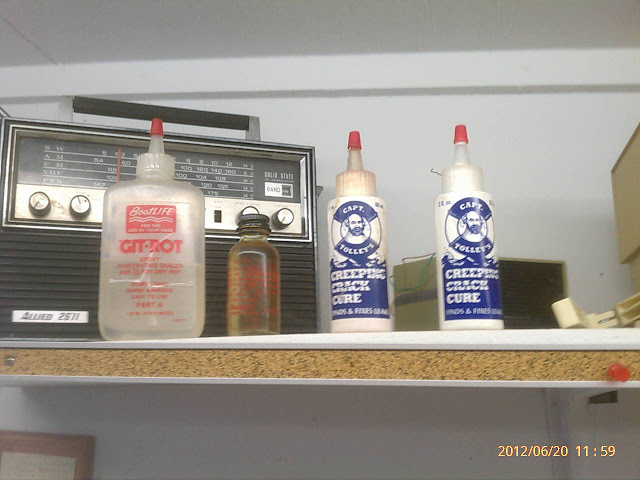Blue Heron
Guru
I have spider cracks in gel coat in a couple of spots and the main one that needs to be fixed is on a step up to the fly bridge. What do you all recommend to address this?
thanks!
BH
thanks!
BH

Greetings,
Mr. Art. The LAST thing I would EVER put ANYWHERE on a boat is silicone! Woe be the next owner or you, for that matter, if you ever want to paint. There are several clear "filler/sealers" available without having to resort to silicone. I have been using one (can't for the life of me remember the name but it does have an X in the name) type successfully around the glass/teak interface on the windows for several years now. Silicone-Bah!
Greetings,
Mr. Art. The LAST thing I would EVER put ANYWHERE on a boat is silicone! Woe be the next owner or you, for that matter, if you ever want to paint. There are several clear "filler/sealers" available without having to resort to silicone. I have been using one (can't for the life of me remember the name but it does have an X in the name) type successfully around the glass/teak interface on the windows for several years now. Silicone-Bah!


Personally, I don't worry about spider cracks.
I was given the same advice regarding the spider cracks on our sailboat.


Jeff,
My concern with the spider cracks are on a load bearing step..
Jeff,
My concern with the spider cracks are on a load bearing step..
My question would be for those that have already repaired spider cracks due to load bearing or flex. Have any of the cracks returned since you did the repair? KJ
My question would be for those that have already repaired spider cracks due to load bearing or flex. Have any of the cracks returned since you did the repair? KJ
Not where I have ground down and strengthened with epoxy and glass...that's about the only thing unless you can reduce the stress with another engineering solution.
Exactially!
The cracks are symptom of an overload , and the distressed under structure must be repaired , and then made stronger if the cure is to last.
FF
I have read the same thing.I've read that some spider cracks are the result of gel coat that's too thick in an area that has normal flex...thick gel isn't flexible.
